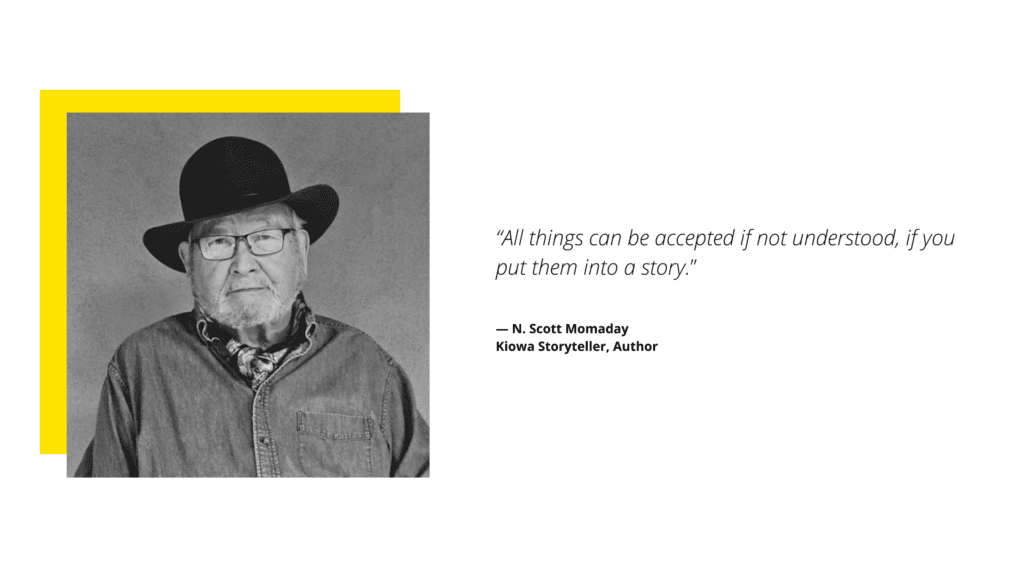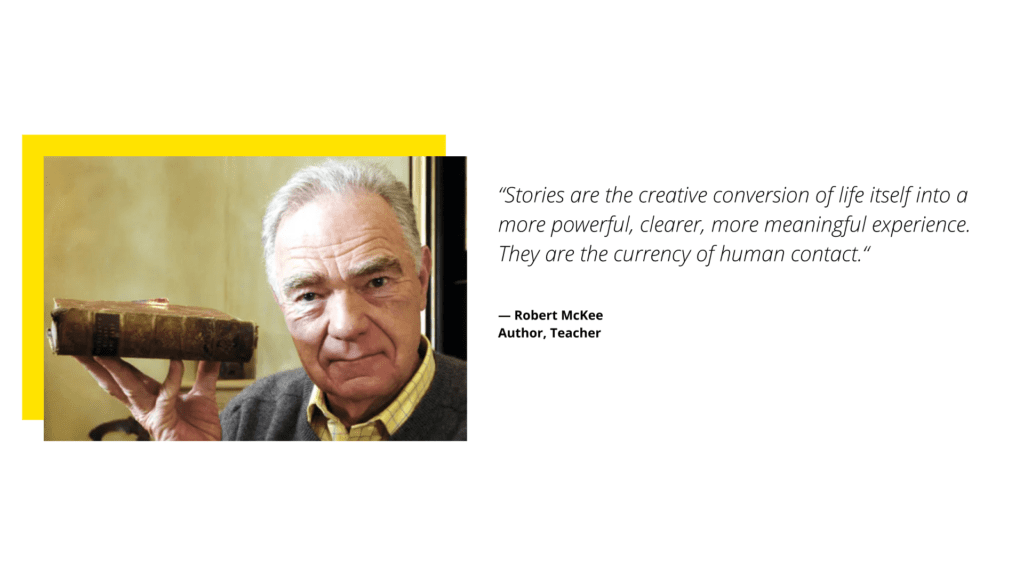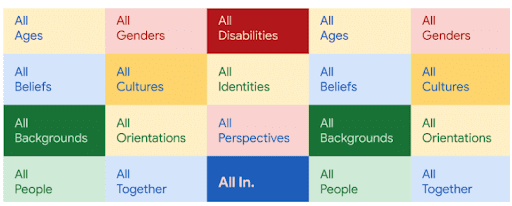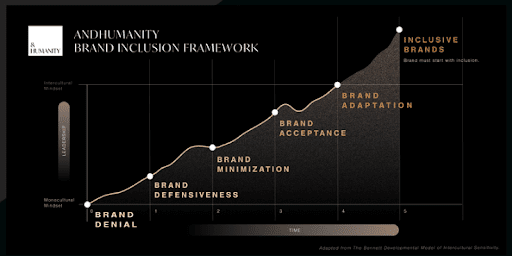Let’s start here: Exceptional storytelling IS humanized storytelling.
Over the past few years, “storytelling” has become this jargony term in marketing, much like “content.” But telling a story is not some fancy trick you need to learn — although it does require training and practice to do it well. And yes, it takes a bit of talent to do it brilliantly.

Still, the work and the practice it takes to tell a good story in your marketing and branding is well worth the investment of your time and emotional energy, because—to paraphrase the marvelous N. Scott Momaday—story allows us to ‘get’ things on an emotional level that we can’t always logically understand, or explain.
Further to this, the work required to humanize your storytelling is not just worthwhile; today, it’s essential.
Why Storytelling Matters
As humans, we find ourselves telling stories naturally, every day, to explain things that happen in our lives. We create narratives to find meaning. To make sense of things that happen, or that people say. Give random events cause. Impart meaning. Stories can transcend logic, tapping into an emotional core we don’t always understand, but that we feel and know is true.

Robert McKee, author of Storynomics: Story-Driven Marketing in the Post-Advertising World (2018) talks about stories being our currency for human connection.
The metaphor of story as currency certainly makes sense in the marketing realm. After all, you can’t sell much without currency — whether physical, crypto, digital. Businesses are all about exchange; about connecting people and things or services. About connecting your values, and others’ values. Joining your audience, with the heart of your brand. By telling stories you offer your audience something, and in doing so you draw them toward you.
Why humanized brand storytelling matters now
Let’s agree that storytelling has power.
Power, as we all know, can be misused.
Let’s face it: all brands ARE NOT doing a good job of telling stories inclusively, or accessibly.
And this to me is the crux of humanized storytelling: remembering that there are so many ways of being human, and telling about it. Being vulnerable. Being real.
From a business standpoint, in fact, it’s crazy not to do so.
As a business owner and marketer I know that any time I am trying to connect with people, I need to do my best to understand them. Include them. To listen. To care.
And if I’m ever telling stories that make my audience, or customers, or teammates, or employees, feel excluded, or angry, left out or wrong, then I am doing a poor job as a brand owner, a marketer, and as a human.
Inclusive marketing is essential
In June 2021 Google’s CMO Lorraine Twohill shared her team’s inclusive marketing toolkit with anyone who wants it because, as she put it, “for too long most ads, including many of our own, have portrayed historically marginalized communities in ways that are harmful or stereotypical. And that’s only if they get included in the first place.”

Twohill humbly notes that when Google completed a diversity audit in 2018, only 10% of the creative content that was reviewed for marketing purposes featured Black or Latinx people compared to a still small 26% in 2021—and that there is still plenty of room for improving representation, specifically in terms of “LGBTQ+ stories and portrayals, include more older adults and people with disabilities, and many more.”

The folks at AndHumanity, an agency devoted to diversity and inclusion, offer a Brand Inclusion Self-Assessment tool, as well, that’s both enlightening and sobering. It invites brand owners and marketers to carefully consider where they sit on the inclusion scale, based in large part on the stories they tell–including who tells them, who’s represented (and who’s not), and how those stories are told.

I took the assessment on behalf of Forge & Spark, and was surprised and concerned to see our results in the Brand Minimization category — ranking just above Brand Defensiveness and below Brand Acceptance.
The key characteristics of this stage include a focus on similarities between cultures rather than a celebration of uniqueness—which I can see that we have tended to do, as we learn how to navigate this space of becoming more inclusive in our marketing and communications and representing the very real, very unique experiences of our team and our customers.
Getting a clear picture of where you are ‘on the map’ is critical in any journey and we’re now more committed than ever to learning, growing, and adapting.
So, what is a humanized brand?
For us, first and foremost, a humanized brand is inclusive, in that it makes your audience feel seen and heard within your content: it includes people and stories from different backgrounds in a realistic and respectful way.
A humanized brand is also accessible, welcoming people of different abilities—in addition to different cultures, communities and backgrounds—to take part in reading, watching, or consuming it.
And make no mistake: a humanized brand is not a ‘pretend person’. It is, rather, an agreement by the many humans behind the logo—the people in your organization and who represent it—that you’re going to show up with humanity, with respect, and with openness.
Humanized brands recognize that the people you’re trying to reach and sell to aren’t one person, either — we need to invite in other stories, experiences, and perspectives, and to listen, pay attention to, and to learn from them, demonstrating genuine care.
And humanized brands make mistakes, too. But they own them. And they try to do better.
What does good humanized brand storytelling look like?
Extraordinary brand storytelling, in general, builds on three qualities, as follows. Humanized brand storytelling goes a step further in each point, ensuring that your stories not only ring true, but feel honest, to and for a diverse range of people.
- Good storytelling always strikes an emotional chord. We simply aren’t rational creatures. If you’ve ever read Daniel Kahneman’s Thinking Fast and Slow, you’ll find Nobel-winning proof that humans simply make no rational sense when we make decisions. And, of course, stories don’t always make logical sense, either. Yet our brains respond to them and prompt us to action as a result of hearing them. When you’re able to tap into this emotional power, as a brand marketer, you’ve entered new territory.
- Good storytelling shows you understand and care about your consumers; it creates empathy. It shows that you as a brand ‘get’ your people, and their challenges, and that you’ve got their back. Good brand storytelling also shows that you’re going to help. And good humanized brand storytelling? It represents the true diversity of your audience, making each member feel included, acknowledged, and understood.
- Good storytelling lets your customers—and not your brand—be the hero. Good brand stories show your customers as they see themselves: as the protagonist in their own story, filled with struggle and ultimately victory. They’re the hero, not your brand. If this were Star Wars, they’re Luke. You’re Yoda.
And remember: there’s always a conflict in any good story. Position your brand as the guide, the mentor, the one who will show them the way, avoiding terrible outcomes to overcome their struggles and achieve success. From a humanized perspective, this often means digging deeper into your understanding of your audience and their struggles. In all good brand stories, after all, the hero must be someone your audience recognizes on a root level as real.
Where to begin telling your brand story in a humanized way?
At Forge & Spark, we usually start every project with a question about purpose, and circle back at various points in the project to ensure that we’re on track.
I’ll invite you to do the same here.
Consider the last time you shared a story about your work or your brand. Perhaps it was in a presentation. Or a pitch. Maybe it was a blog post, like this one, or in a company newsletter. It could have even been a team meeting. Then ask yourself these questions:
- What was the point of your story, or, what were you trying to accomplish?
- What was the reception or reaction from most of the audience? Was it the same for everyone?
- Did the story ultimately accomplish what you wanted it to?
- Did you feel good about the way you and/or your brand ‘showed up’ in the story, in terms of reflecting your values?
There are, of course, no right or wrong answers to these questions. They’re yours.
Want to dive even deeper?
But if your story didn’t reflect you or your brand authentically or didn’t express your values in quite the way you’d have liked, we’ve included a few more questions to help you dive deeper.
- Was your story more about you, or about your audience?
- Who did you speak to, in your story, and who did you speak about? Were they the same group of people?
- Might your story have unintentionally excluded anyone?
- Did you express emotion? Empathy? Curiosity?
- Did you share something tough to share, or make yourself vulnerable in any way?
- Did you share details to show you’d listened to and/or responded to your audience or customers?
It’s a starting point merely to answer these questions and to position yourself on the map, as it were, toward more powerful humanized brand storytelling.
And remember, we’re all on a journey that includes mistakes, learning, and growth—yes, even brands. And the journey makes for rich storytelling. Good luck with yours.
Need a helping hand telling your story? Reach out, we’d love to chat.













